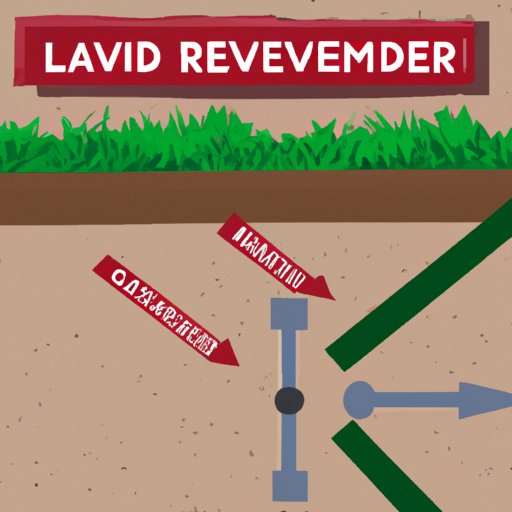
I. Introduction
A level yard not only enhances the aesthetics of your property but also helps prevent damage to your home and injury to your family members. With a bumpy, uneven lawn, your mower might scalp the grass in some areas, or standing water could threaten the foundation.
Our guide will provide five easy steps to help you level your yard like a pro. Creating a level yard is achievable, and in this article, we will show you how.
II. Five Easy Steps to Level Your Yard like a Pro
Here are five simple steps to level a yard:
- Step 1: Plan and Prepare
- Step 2: Take Accurate Measurements
- Step 3: Mark the Low Spots
- Step 4: Fill in the Low Areas with Topsoil
- Step 5: Rake and Roll the Soil
In this section, we will elaborate on these five steps and their respective techniques.
III. DIY: The Ultimate Guide to Leveling Your Yard
Step 1: Plan and Prepare:
Before you begin, assess the area you need to level and how much soil you will need. Remove rubble, twigs, stones or anything else that may interrupt the leveling process.
You should also water your lawn well a few days before leveling to soften the soil, making it more pliable and easier to manipulate.
Step 2: Take Accurate Measurements:
Accurate measurements are essential for the process to be a success. To measure the low spots on your lawn, you can use a string level, a line level, or even an iPhone app. Record the measurements in inches for easy calculation.
Step 3: Mark the Low Spots:
After taking measurements, you can mark off the low areas on your lawn using spray paint. If you’re unsure how much soil you need to add, you can add a thin layer, then check your progress and add more soil as needed.
Step 4: Fill in the Low Areas with Topsoil:
Using a shovel and wheelbarrow, add topsoil to the low spots. On average, you’ll need to add one inch of soil per 10 square feet of lawn. Add more or less soil as needed to ensure it’s even with the surrounding area.
Step 5: Rake and Roll the Soil:
Raking is a crucial step in the process that allows for an even distribution of the soil. A steel rake or a garden rake will work well for this purpose. Rake the soil until it’s level, and then use a roller over the soil. Rolling will compact the soil, which in turn leads to a solid foundation for your lawn.
IV. The Best Tools to Use for Leveling Your Yard
Shovels, wheelbarrows, steel rakes, garden rakes, and rollers are essential tools when leveling your yard. You may also need a string level, a line level, or even an iPhone app, to make accurate measurements.
Suppose you have a large yard and require more extensive equipment. In that case, consider renting or purchasing a power tiller, a landscaping rake, a box blade, or a tractor.
V. Top Mistakes to Avoid When Leveling Your Yard
One top mistake people make is overlooking the preparation process. Before you begin, ensure the soil is well-watered and free of debris. Additionally, some homeowners underestimate the amount of soil they require. Always measure accurately and add small amounts of soil at a time to avoid overfilling.
Another common mistake is filling a low spot with grass seed instead of topsoil. The grass seeds need a level surface to grow, and if you plant them on uneven ground, they won’t be successful.
VI. How to Save Time and Money When Leveling Your Yard
A great way to save both time and money when leveling your yard is to rent tools and equipment. For instance, you can rent a power tiller, a landscaping rake, or a tractor if your lawn is large or in a condition that requires more extensive equipment.
You can also use your soil or compost instead of buying expensive bags of topsoil. Also, try to improvise, say, using an iPhone app for accurate measurements instead of purchasing a line level.
VII. Conclusion
Having a level yard not only enhances the aesthetics of your home and property, but it also protects you and your family from the risks of injury and foundation damage.
With our five easy steps, tips and tricks discussed in this article, you can now level your yard like a pro. Remember to accurately measure, mark the low spots, add soil gradually, and use the best tools for the job.




